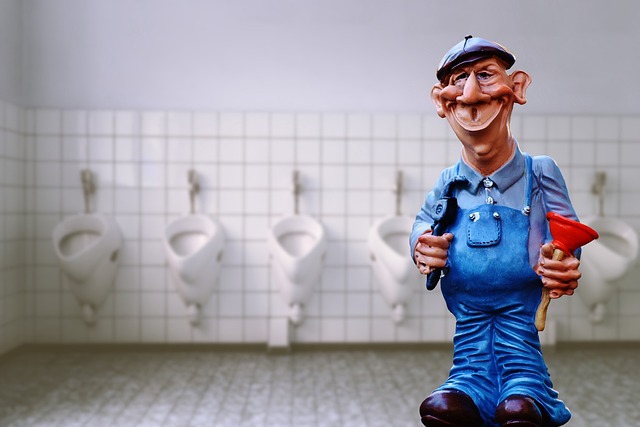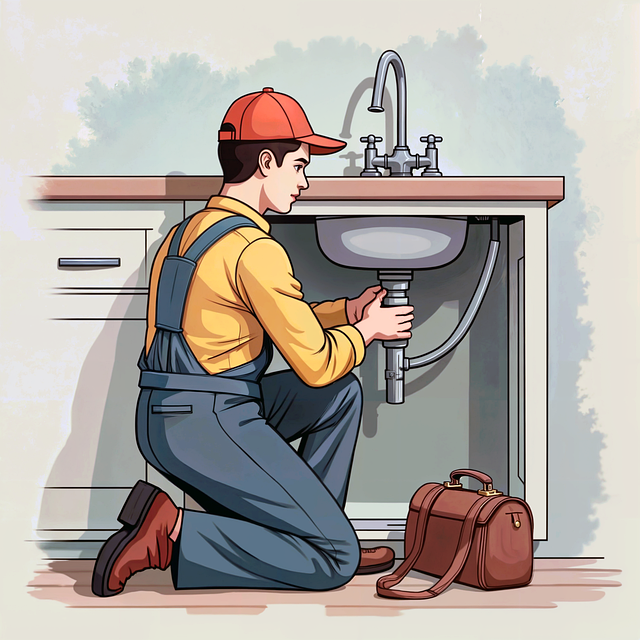Plumbers rely on advanced tools like pressure gauges and flow meters to optimize plumbing systems, ensuring efficient water pressure (40-60 psi) and flow metrics (gpm). These tools help diagnose issues such as leaks, blockages, low pressure, and irregular flow, guiding repairs and upgrades for seamless system performance. Regular maintenance is crucial to address common problems promptly, maintaining optimal plumbing functionality.
Plumbers often face challenges related to water pressure and flow issues in systems. To address these, they must understand key metrics such as pressure and flow rates. This article explores essential tools and techniques used by plumbers for accurate testing and measurement of system efficiency. Additionally, it provides troubleshooting tips for common problems identified during pressure and flow tests, equipping professionals with the knowledge to deliver optimal plumbing solutions.
- Understanding Water Pressure and Flow Metrics for Plumbers
- Tools and Techniques Used to Test and Measure System Efficiency
- Troubleshooting Common Issues Identified During Pressure and Flow Testing
Understanding Water Pressure and Flow Metrics for Plumbers

For plumbers, understanding water pressure and flow metrics is paramount to ensuring effective and efficient plumbing systems. Water pressure, measured in pounds per square inch (psi), indicates the force at which water moves through pipes. Optimal pressure typically ranges between 40-60 psi, ensuring a balance between strong enough to prevent clogs and low enough to avoid damage to fixtures or pipes. Plumbers use pressure gauges to monitor and adjust pressure levels as needed.
Flow metrics, on the other hand, refer to the rate at which water moves through a system, usually measured in gallons per minute (gpm). Different plumbing applications have varying flow requirements—for instance, a showerhead may require 2.5 gpm while a high-efficiency toilet might only need 1.6 gpm. Plumbers employ flow meters to accurately measure and troubleshoot flow issues, ensuring water distribution systems operate at peak performance without wastage.
Tools and Techniques Used to Test and Measure System Efficiency

Plumbers employ a range of tools and techniques to test and measure system efficiency, ensuring optimal water pressure and flow throughout a plumbing system. One common tool is the pressure gauge, which allows plumbers to monitor and diagnose any issues related to pressure levels. By attaching the gauge to a specific point in the system, they can quickly identify leaks, blockages, or pressure drops, enabling them to pinpoint problem areas with precision.
Additionally, flow meters are utilized to measure the rate of water flowing through different sections of the system. These devices provide valuable data on the efficiency of pipes, valves, and fixtures, helping plumbers identify bottlenecks or areas where water is not moving as it should. By combining pressure gauge readings with flow meter data, professionals can gain a comprehensive understanding of the system’s overall performance, allowing them to make informed decisions for any necessary repairs or upgrades.
Troubleshooting Common Issues Identified During Pressure and Flow Testing

When a plumber conducts pressure and flow testing, several common issues may surface. One frequent problem is low water pressure, which can be caused by various factors such as leaks in the system, clogged pipes, or an old, inefficient faucet. If this issue is identified, a thorough inspection of the plumbing network is necessary to locate and repair the leak or replace faulty components.
Another common challenge during testing is irregular water flow. This can result from obstructions like mineral deposits, corrosion, or wrong fittings. Plumbers should check for any blockages, ensure proper pipe connections, and replace worn-out parts to restore seamless water flow throughout the system. Regular maintenance and prompt addressing of these issues are key to keeping your plumbing system running smoothly.
Testing water pressure and flow is an essential part of a plumber’s toolkit, enabling them to ensure efficient system performance. By understanding key metrics and utilizing appropriate tools, plumbers can quickly identify and resolve issues, ensuring optimal water distribution. This process not only enhances the system’s longevity but also provides homeowners with reliable and dependable plumbing services.
